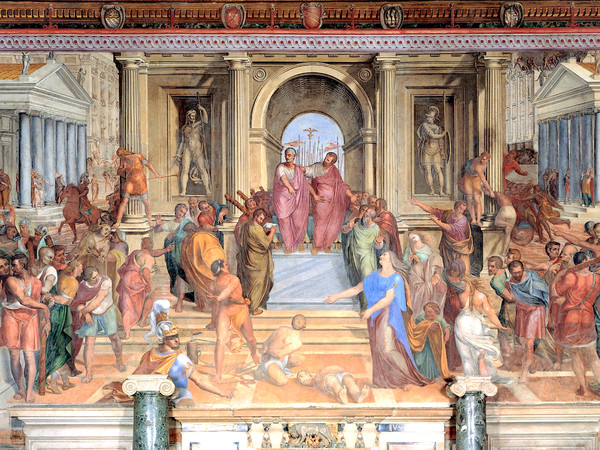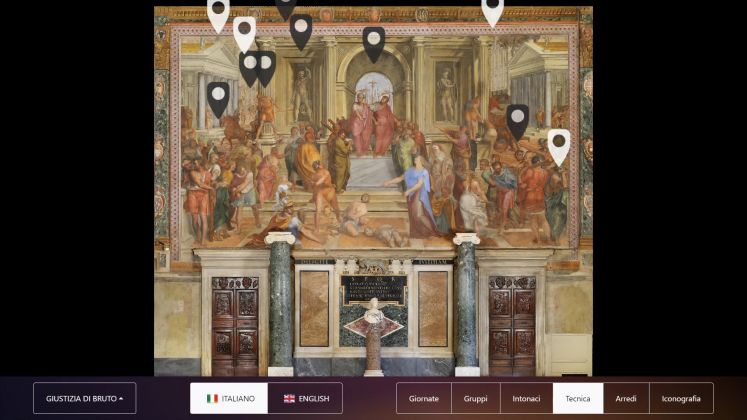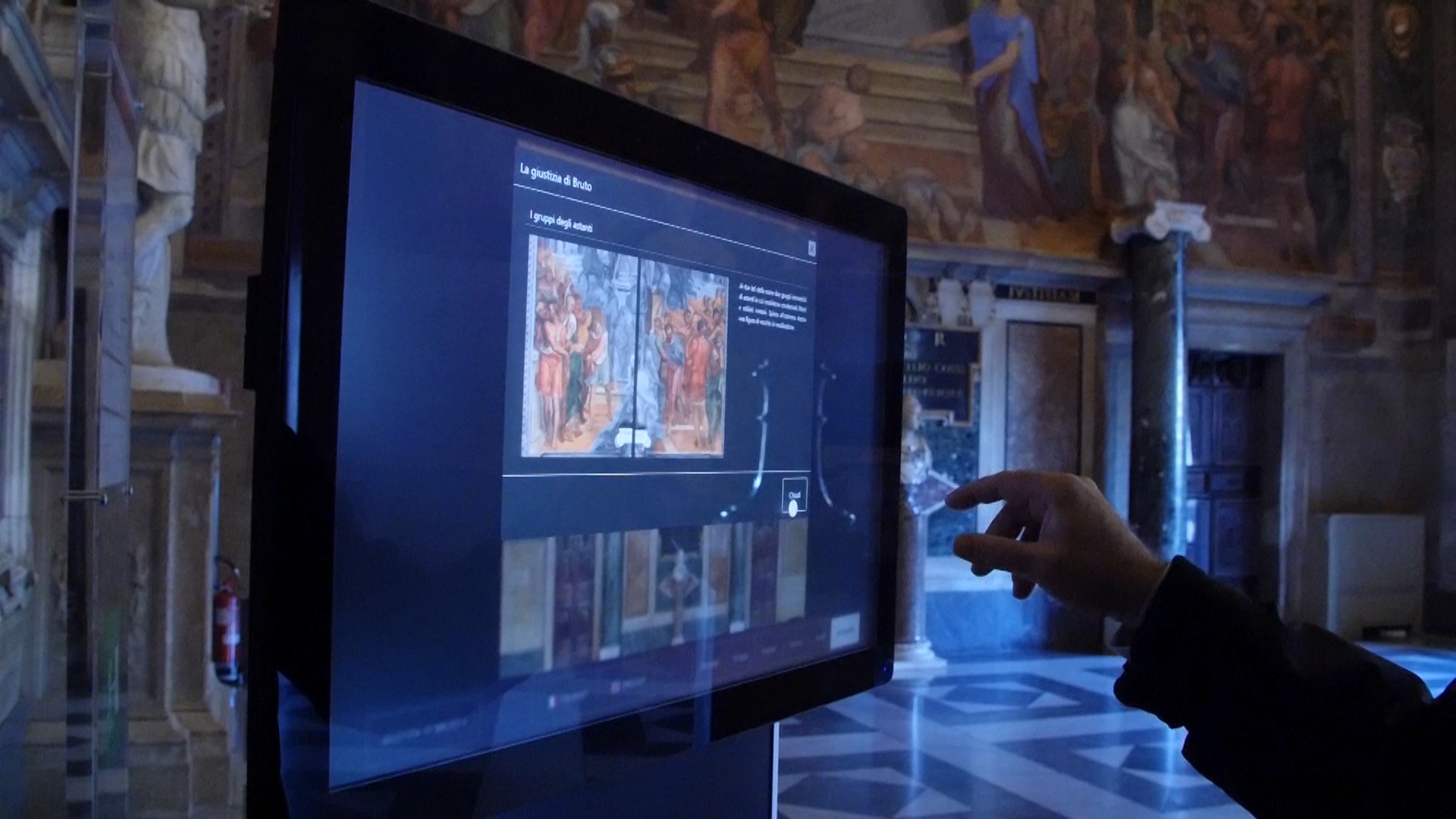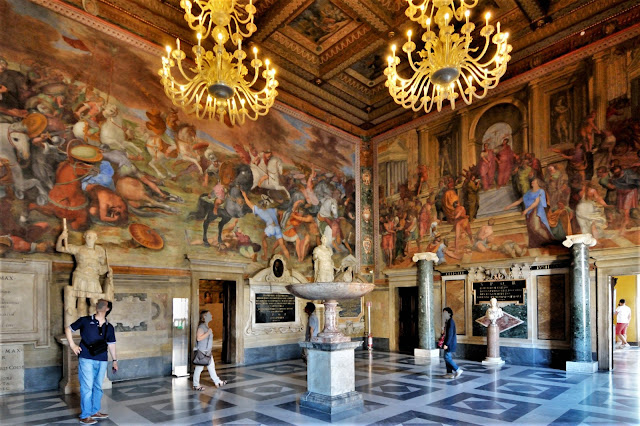The story of a fresco: Visea tells the Sala dei Capitani of the Capitoline Museums
Visea wants to tell the story of the frescoes: from 15 December the Capitoline Museums in Rome host this project, which allows to give life to the cycle of frescoes present in the Sala dei Capitani of the Palazzo dei Conservatori of the Roman museum complex, created by Tommaso Laureti.

Tommaso Laureti, la Giustizia di Bruto, Sala dei Capitani, Palazzo dei Conservatori. Musei Capitolini, Roma – Courtesy Arte
The artist, less known than his master Sebastiano dal Piombo, divided himself during his artistic career between painting and architecture, leaving testimonies in Bologna (for example the Fountain of Neptune in Piazza Maggiore), as well as in the capital (in fact he also frescoed the vault of the Sala di Costantino in the Vatican Palaces).
Returning to the cycle of the Sala dei Capitani, these are frescoes made between 1587 and 1594 and commissioned by the Capitoline Magistracy, to remember and praise the value of the Ancient Romans, narrating emblematic episodes that recall the first republican period: “The Justice of Brutus”,”Orazio Coclite at the Sublicio bridge”,”Muzio Scevola in front of Porsenna” and “The Battle at the Regillo lake”.

Visea – Courtesy Visea
The application provides the visitor with insights that go beyond the support offered by the audio guide: it is an immersive experience that crosses the temporal sequences of the frescoes, through a reconstruction of the pictorial groups that follow the different days of execution.
The textual insights are flanked by images thanks to touch-less totems, therefore without contact, where it is possible to receive information with simple movements that respond to the needs imposed by the period.

Visea, Sala dei Capitani, Palazzo dei Conservatori – Courtesy Artribune
The initiative derives from the 2019 call “L’impresa fa cultura” promoted by Sovrintendenza Capitolina ai Beni Culturali and Roma Culture. By providing insights into the timing, the pictorial technique and the context of the work, and thus giving a complete overview of the pictorial cycle, Visea becomes a useful tool not only for visitors, who are involved in the storytelling during their visit, but also for the scholars of the frescoes themselves.

